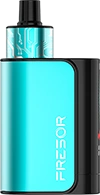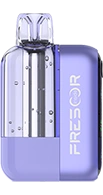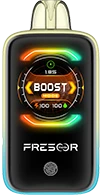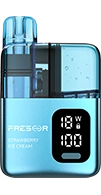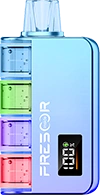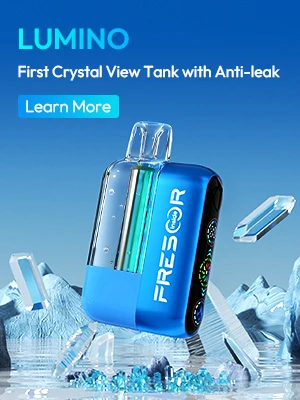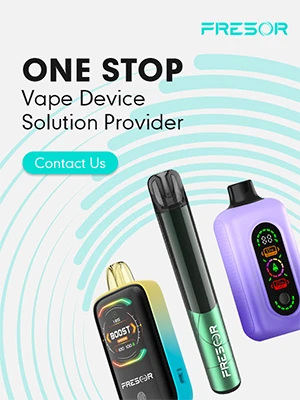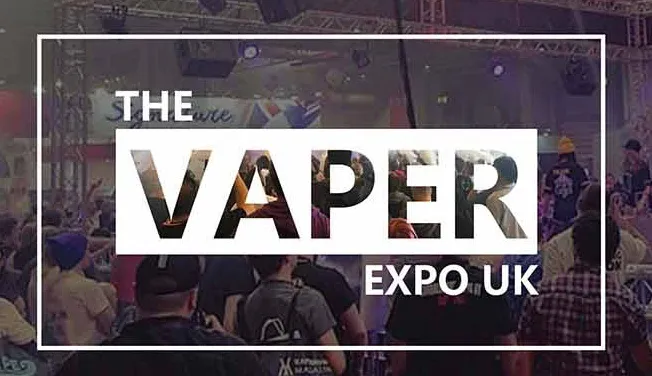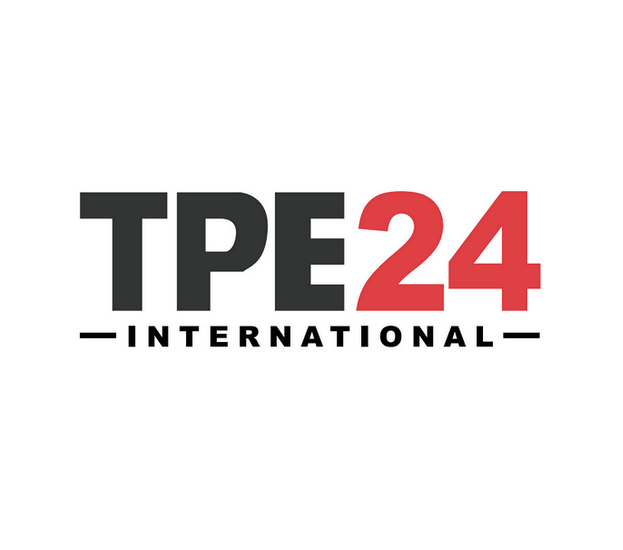Vape Market Analysis and Trends in Germany: Key Insights You Must Know

16 January 2025
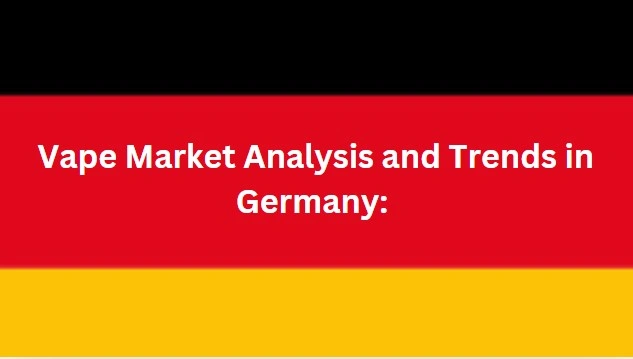
According to Grand View Research, the German e-cigarette and its vape market generated a revenue of USD 450.4 million in 2023 and is anticipated to be USD 1, 589.7 million by 2030. Therefore, the German vape market is anticipated to grow at a CAGR of 19.7% from 2024 to 2030.
As a leader in the European vaping market, Germany attracts global brands and innovative startups alike. Its robust regulatory framework and diverse consumer base make it a pivotal market in understanding the vaping industry’s future in Europe.
This article delves into the vape market analysis and trends in Germany, offering key insights for manufacturers, distributors, and consumers interested in this dynamic industry.
Let’s dive in!
Overview of the Vape Market in Germany: All You Need to Know
Current Market Size and Growth Rate
Needless to say, the German vape market has seen major growth compared to other countries. The finding has it that the population of e-cigarette use in Germany has snowballed from 1.6% in 2016 to 2.2% at the tail end of 2023. Additionally, this period has also witnessed the growth of disposable e-cigarette use from 1.0% to 0.8%.
The above figures indicate the rate at which the vape market in Germany has witnessed tremendous growth.
Thus, compared to other European Markets: While the UK leads in market penetration, Germany shows more stable regulatory conditions, attracting top international brands and fostering local manufacturing growth.
Now you know how fast the vape market in Germany is growing, unlike other European countries. So, what are the top vape pod manufacturers dominating the German vape market?
Let’s find out!
Top 4 Vape Pod Manufacturers Dominating the German Market
1. AL FAKHER

This vape pod manufacturer was founded in 1999. Additionally, AL FAKHER is renowned for its expertise in traditional smoking alternatives and has made significant strides in the German vaping market. With a legacy rooted in delivering premium products, the brand has successfully adapted its offerings to cater to vaping enthusiasts in Germany, blending quality and tradition.
Pros
●High-Quality Flavors: AL FAKHER is celebrated for its rich, authentic flavour profiles that resonate well with consumers seeking a premium vaping experience.
●Widespread Distribution: The brand boasts an extensive distribution network, ensuring its products are easily accessible across Germany, from retail outlets to online platforms.
Cons
●Compared to competitors in the vaping industry, AL FAKHER has been slower to integrate cutting-edge technology, such as advanced vape devices or customizable features, which are increasingly in demand among modern users.
2.ELFBAR

ELFBAR was founded in 2018 and has rapidly gained popularity in the vaping industry, becoming a go-to brand for modern vaping enthusiasts. Additionally, this vape manufacturer is known for its sleek, disposable vape pods, the brand has successfully captured the attention of users who prioritize convenience and style.
In addition to its innovative product designs, ELFBAR has embraced eco-friendly initiatives, striving to reduce environmental impact through sustainable manufacturing and packaging practices.
Pros
●ELFBAR offers an extensive selection of flavours, catering to diverse taste preferences, from fruity blends to classic tobacco options.
●The brand’s sleek and portable devices are easy to use, making them an excellent choice for beginners and seasoned vapers alike.
●Comes with an eco-friendly focus
Cons
●Compared to some competitors, ELFBAR’s products are priced at a premium, which may deter budget-conscious consumers.
3. LOST VAPE
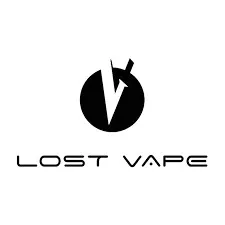
LOST VAPE has established itself as a premium brand in the vaping industry, catering primarily to tech-savvy consumers. It was founded in 2014 and is celebrated for its innovative approach, offering advanced mod systems and high-performance devices that combine luxury with functionality. LOST VAPE is a favourite among experienced vapers who value cutting-edge technology and a customizable vaping experience.
Pros
●LOST VAPE is at the forefront of vaping innovation, incorporating features like DNA chipsets and high-precision controls into its devices for unparalleled performance.
●Comes with customizable devices
Cons
●As a premium brand, its products are often priced higher, which may not appeal to budget-conscious consumers.
4.Veev
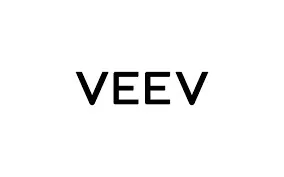
Veev has carved a unique niche in the vaping industry as a strong advocate for sustainable practices. With a focus on eco-conscious consumers, the brand has gained popularity in the German market by integrating recyclable materials and innovative refill systems into its product line.
Pros
●Veev prioritizes sustainability by using recyclable components in its devices and packaging, reducing its environmental footprint.
●The brand’s refillable pods are designed to minimize waste, offering an efficient and eco-friendly alternative to disposable vaping products.
Cons
●Compared to competitors, Veev offers a more restricted range of flavours, which may not satisfy users seeking extensive variety.
Regulatory Factors Impacting the German Vape Market
The German vape market is shaped by a combination of strict regulatory frameworks and evolving demographic trends. These regulations include the following;
Existing Regulations
Germany’s vaping market is governed by stringent laws designed to ensure consumer safety and limit the appeal of vaping to minors:
●Nicotine Content: E-liquids are restricted to a maximum nicotine concentration of 20 mg/ml.
●Advertising Restrictions: Regulations prohibit vaping advertisements on public broadcast media and in spaces accessible to minors, ensuring responsible marketing practices.
●Packaging and Labeling: E-liquids must display warnings such as "This product contains nicotine, which is a highly addictive substance," prominently on the packaging.
Upcoming Legislation
●Tax Increase: A planned tax hike on vaping products in 2024 is expected to raise prices, potentially altering consumer buying patterns and driving some users toward alternatives or illicit products.
●Flavour Restrictions: Stricter rules on flavoured vapes are under discussion, which may reduce product diversity and limit appeal, especially among flavour-seeking consumers.
Impact of EU Directives
Germany’s vape regulations are heavily influenced by the EU Tobacco Products Directive (TPD), which mandates:
●Rigorous product testing to ensure safety and compliance.
●Detailed ingredient disclosures for transparency.
●Restrictions on advertising to prevent targeting vulnerable groups.
Future amendments to the TPD could profoundly affect the German vaping landscape, altering manufacturing, distribution, and marketing practices.
Demographics of Vape Users in Germany
Age Distribution
●18–34 Age Group: Over 40% of German vapers belong to this demographic, making it the largest consumer segment. Their preferences often lean toward innovative, trendy products.
●35–50 Age Group: Accounting for 25% of the market, this group shows growing adoption rates, driven by health-conscious transitions from smoking.
Top 3 Emerging Trends in the German Vape Market
1. Technological Innovations
The German vape market is embracing advanced technology to enhance user experience and safety.
●Smart Vapes: Devices equipped with features like Bluetooth connectivity, puff tracking, and app-based customization are increasingly popular among tech-savvy consumers.
●Improved Battery Life and Safety: Manufacturers are focusing on developing longer-lasting batteries and integrating advanced safety features such as temperature controls and leak prevention mechanisms, addressing key consumer pain points.
●Personalized Vaping: Innovations like customizable wattage settings and coil options continue to attract experienced vapers seeking tailored solutions.
2. Eco-Friendly and Sustainable Products
Sustainability is becoming a defining feature in the German vaping market, driven by environmentally conscious consumers.
●Recyclable and Biodegradable Products: The demand for recyclable vape pods and biodegradable packaging is steadily increasing.
●Industry Leaders: Brands like ELFBAR and Veev are spearheading this movement by incorporating eco-friendly materials and promoting sustainable practices, setting a benchmark for the industry.
●Corporate Responsibility: Companies adopting green initiatives are gaining consumer trust, making sustainability a competitive advantage.
3.Growth of Online Sales Channels
E-commerce is transforming the way consumers purchase vaping products in Germany.
●Market Growth: Online vape sales surged by 18% in 2023, with e-commerce platforms now accounting for over 35% of total sales.
FAQs about Vape Market Analysis and Trends in Germany
Is vaping popular in Germany?
Yes, vaping is highly popular in Germany. The market's growth has been fueled by younger consumers and an increasing shift from traditional smoking to vaping.
How big is the vape market in Germany?
The German e-cigarette plus its vape market generated a revenue of USD 450.4 million in 2023 and is anticipated to hit USD 1, 589.7 million by 2030.
Which brands lead the German vaping industry?
Top brands include AL FAKHER, ELFBAR, LOST VAPE and Veev, each offering unique strengths in product quality, technology, and sustainability.
Conclusion
The German vape market is a powerhouse in Europe, characterized by robust growth, diverse consumer demographics, and dynamic market trends. With leading brands like ELFBAR and Veev shaping the landscape, Germany offers a wealth of opportunities for manufacturers and consumers alike.

